|
TAPROOT BLOG: Psychoeducation for Clients and Providers
|
|
Author: Carly Barocas, Taproot Therapy Clinical Trainee Life is a masterpiece of contradictions and complexities, woven with intricate threads that shape
our experiences. As you embark on your therapeutic journey, it's essential to understand and embrace a powerful concept called dialectics, or both/and thinking. This way of approaching life and its challenges can help you find balance, emotional well-being, and personal growth. Let's explore how you can integrate this way of thinking into your life. What is Dialectics? ● Dialectics is the art of holding opposing ideas and feelings at the same time. It recognizes that life is rarely black or white; instead, it's filled with shades of gray. By accepting that multiple perspectives and emotions can coexist, dialectics opens the door to greater understanding and growth. ● By acknowledging that opposing ideas and feelings can coexist, we open ourselves to greater understanding and compassion. Let's allow the power of dialectics to inspire us to new heights of self-discovery and connection with those around us. Implementing Dialectics 1. Embrace the beauty of uncertainty. a. If you grapple with anxiety and feel overwhelmed when making decisions, dialectics offers a compassionate perspective. It encourages you to acknowledge that uncertainty is a natural aspect of life. Rather than perceiving it as something to be feared, embrace the discomfort of uncertainty and recognize the potential for personal growth when you step outside your comfort zone. By holding space for both the unease and the opportunity, you can approach decision-making with self- compassion and a gentle curiosity about the possibilities. 2. Honor different perspectives. a. In a disagreement with a loved one, dialectics invites you to consider the validity of both your perspective and theirs. Rather than clinging to the idea of being right, try to understand where the other person is coming from. By practicing active listening and empathy, you can create space for both viewpoints, fostering healthier communication and connection. 3. Embrace your complexity. a. As you navigate the therapeutic process, you may experience a mix of emotions, such as sadness and joy. Dialectics reminds you that it's possible to hold both emotions simultaneously. By allowing yourself to embrace the complexity of your experience, you can find moments of joy and hope amidst the challenges and setbacks. 4. Embrace the messiness of emotions. a. If you struggle with depression, there may be times when you experience both sadness and glimpses of happiness. Dialectics encourages you to honor these contradictory emotions. Recognize that feeling some moments of happiness doesn't invalidate your difficulties. By embracing both sides, you can cultivate resilience and find moments of light even within the darkness. As you embark on your therapeutic journey, remember that dialectics can be a guiding light, helping you navigate the complexities of life. By embracing both/and thinking, you cultivate emotional resilience, foster stronger relationships, and unlock the doors to personal growth. Allow the power of dialectics to guide you toward a deeper understanding of yourself and those around you. Embrace the beauty of contradictions! Play-Therapy for Children Written by: Maitreyee Sathe, Clinical Trainee specializing in play therapy1/3/2024
Just as adults tend to talk about their feelings and emotions, children act them out in play! Play is
a child’s natural way of communication. Children use toys to express themselves including their needs, wishes and wants. They use toys as a medium to make sense of their life experiences. For children, what seems unmanageable in reality, becomes manageable in play! Children externalize their emotions and thoughts with the help of toys and hence experience a sense of relief through play. Play therapy is an evidence based approach with solid research to support its effectiveness for many populations and concerns. Children experiencing social, emotional or behavioral difficulties use the playroom as a safe space to comprehend their struggles, express their emotions and explore possible solutions. The children use the toys in the playroom as a form of communication with the clinician. These toys include real life and nurturing toys such as doll family, doll house, puppets, cars, money, medical kit, food; Aggressive toys such as toy soldiers, plastic guns, animals and aggressive puppets; and finally expressive toys such as sandtray, paint, clay, musical instruments and, dress up clothes. Play therapy helps children to facilitate communication, enhance social relationships, foster emotional wellness and increase personal strengths. The clinician in the playroom strives to provide the child with a warm, safe and supporting environment. The clinician provides the child with unconditional positive regard while building a friendly and warm relationship. The clinician maintains a deep respect for the child’s ability to solve his/her problems and gives the child the opportunity to do so. A collaborative approach is taken with an aim to empower both the child and the caregiver and the clinician conducts regular sessions with parents and guardians to monitor the child’s progress. Contact [email protected] to know more/ schedule an appointment! Author: Maitreyee Sathe, Taproot Therapy Clinical Trainee We all have heard about the benefits of mindfulness exercises as part of adult therapeutic practice. But, we aren’t quite aware that mindfulness practices are highly effective with children as well! A child-friendly explanation of mindfulness would be- paying attention to what is happening in the present moment. Studies have shown that integrating mindfulness or meditation exercises into a child’s routine can prove to have copious benefits.
First and foremost, children can use mindfulness to deal with the stressors of their life. (Yes, children most definitely experience stressors in their lives, although they may be different than adult stressors). Along with this, they learn important skills such as being present in the moment, self-compassion and openness. Practicing mindfulness also leads to improved concentration and self-control. As children learn primarily by observation, parents and caregivers are a significant source for modeling these practices to children! These activities need not necessarily be something lengthy or fancy. It can be as simple as taking a walk, having a calming uninterrupted playtime with the child or reading/ drawing together. Remember that the purpose of the exercise is to be fully present in the current moment! A simple mindfulness activity for children is a body scan. Ask the child to lie down in a comfortable position. Introduce deep breathing and then ask the child to pay attention to different parts of the body from their head to their toes. Ask them to notice all the sensations they experience including temperature, texture and weight. This exercise helps children be more mindful of what’s happening in their physical bodies. Lastly, another simple activity is the 4 square breathing exercise. Ask the child to sit in a comfortable position. Ask the child to imagine a square in front of them. Now trace along the height of the square while taking a deep breath through your nose for 4 seconds. Now, trace along the width of the square while holding the breath for another 4 seconds. Exhale through the mouth as your trace along the height of the square and then hold the breath for 4 seconds as you complete the square. Repeat this deep inhalation, hold, exhalation and hold for four or five more times. This helps the child practice deep breathing to calm their mind and body. Author: Rachel Silberman, Taproot Therapy Clinical Trainee Burn-out, according to the World Health Organization, is a syndrome that results from chronic workplace stress. There are three dimensions of burn-out:
In other words, burn-out occurs when an individual is feeling overworked and overwhelmed by their workload. It is important to understand how to avoid burn-out in the workplace, so that you can continue to be productive while also prioritizing your mental health. Here are some tips that can help:
While these tips may appear to be simple, they can be tricky to enforce in your daily life. Remember that we all cope with stress differently, so be kind and patient with yourself when implementing these strategies. Your brain will thank you! |
Categories
All
Archives
May 2024
|
|
Taproot Therapy, LCSW, PLLC [email protected] 285 Lexington Avenue Suite 2A New York, NY 10016 141 E 35th Street Suite J New York, NY 10016 |
|

 RSS Feed
RSS Feed

